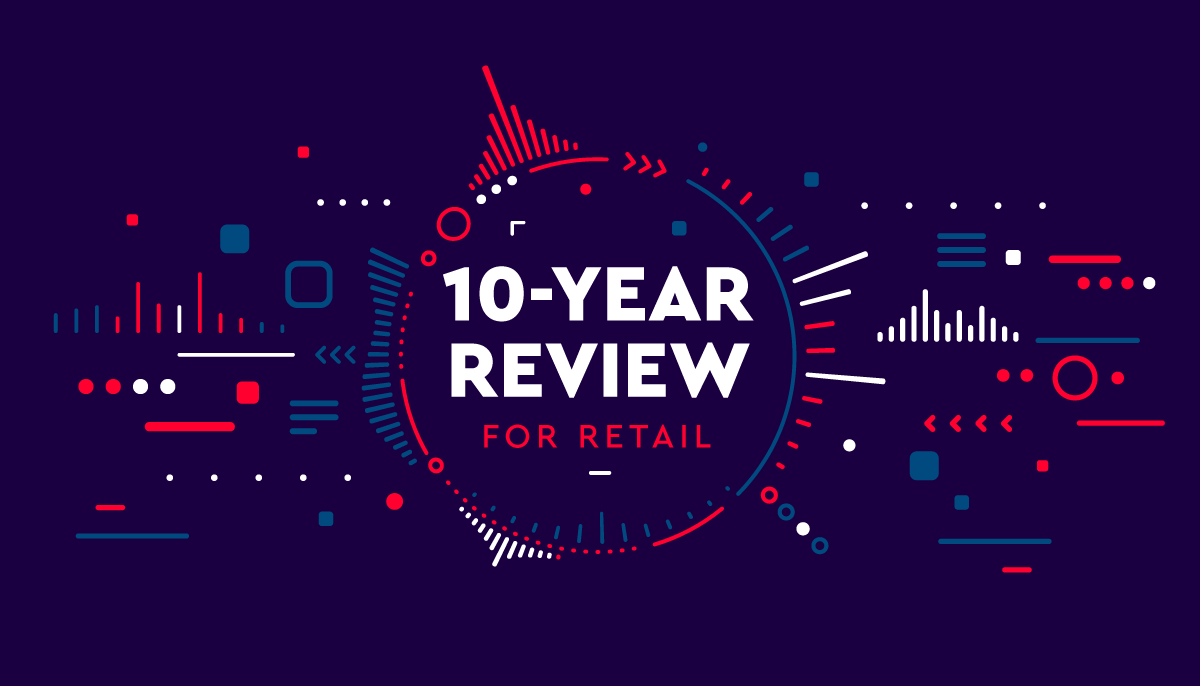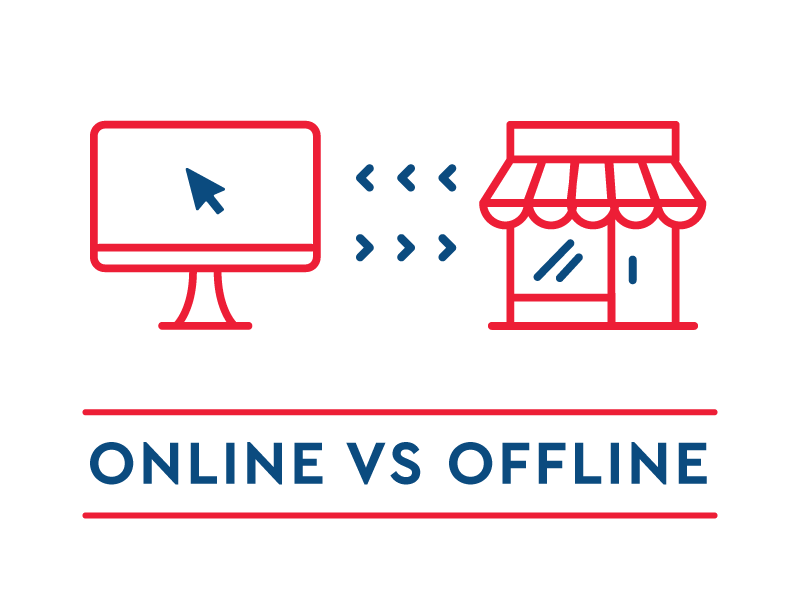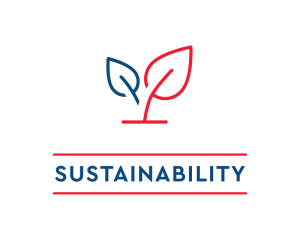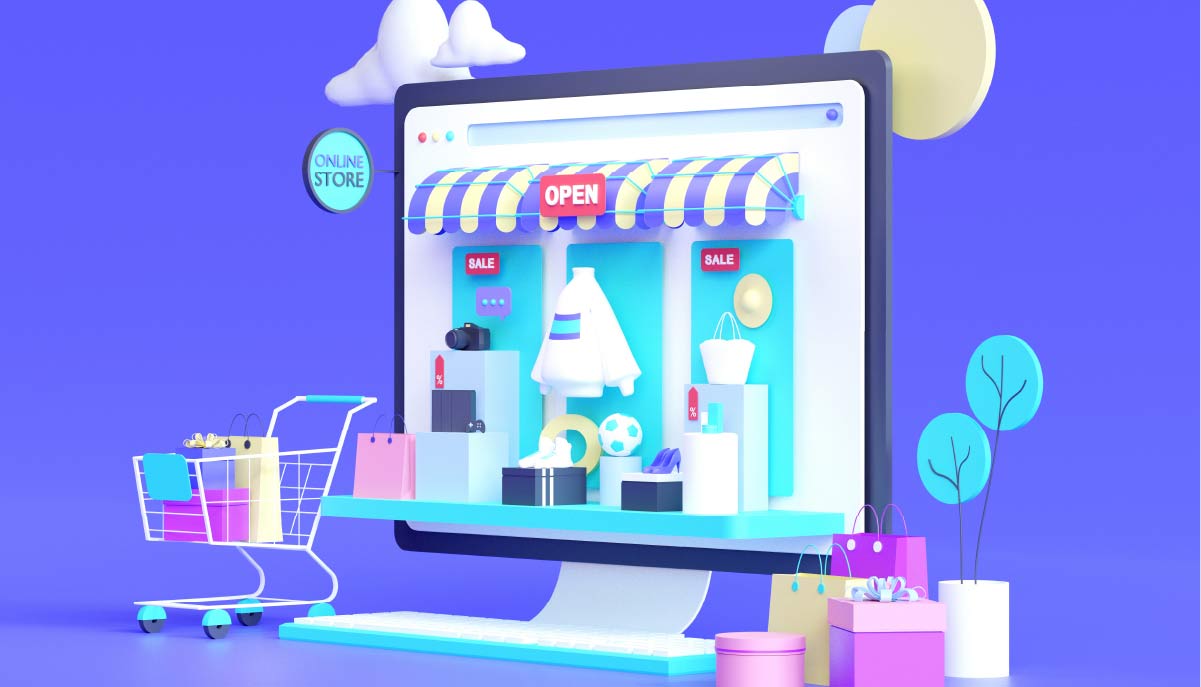
A 10-Year Review for Retail – Navigating a Decade of Rapid Digitalization
Since 2010, the retail industry has faced a series of rapidly evolving and technology-driven changes. A decade ago marked the beginning of the digital revolution for retail across the globe and this has set the tone for many of the trends we’ve seen since, and more importantly, those we expect to see in the year(s) ahead.
Whilst the sudden, rapid growth of eCommerce represented an opportunity for agile retailers to capitalize on a new and concerted revenue stream, simply diversifying to omnichannel or creating an online presence wasn’t enough. The influence of retail’s digital transformation has been vast and there have been many defining transitions over the last decade, including personalization, omnichannel, transparency and, lastly, COVID-19.
Here we take a look at these key trends, what they have meant for retailers, and the opportunities that lie ahead for 2021.
1. Walking a tightrope between online and offline
 For many retailers there’s been a real struggle over the past 10 years to overcome the challenges associated with such rapid digitalization. Providing customers with a more convenient and improved shopping experience has been a priority for retailers for years. However, this required many to diversify their offerings and consider areas of investment carefully. Many brands felt conflicted about investing wholeheartedly into an entirely online future, in the fear that they’d risk losing traditional existing customers. However, this wasn’t the only option.
For many retailers there’s been a real struggle over the past 10 years to overcome the challenges associated with such rapid digitalization. Providing customers with a more convenient and improved shopping experience has been a priority for retailers for years. However, this required many to diversify their offerings and consider areas of investment carefully. Many brands felt conflicted about investing wholeheartedly into an entirely online future, in the fear that they’d risk losing traditional existing customers. However, this wasn’t the only option.
The answer presented itself as balance – between the early investment and the prospective income. However, this balance was often hard to find – leading to poorly executed investments into omnichannel retail offerings and often poor inventory visibility, as companies struggled to manage the new art of data collation, insight-driven supply, and demand business models.
2. Standing out from the crowd with personalization
 As the years went by, brands found themselves struggling against the rise of retail giants. And so differentiation manifested in the form of personalization as online retailers and brands sought to out-compete the relative coldness of online shopping. This also presented an opportunity to provide the (lacking) human touch and strike a chord with consumers’ wants and needs.
As the years went by, brands found themselves struggling against the rise of retail giants. And so differentiation manifested in the form of personalization as online retailers and brands sought to out-compete the relative coldness of online shopping. This also presented an opportunity to provide the (lacking) human touch and strike a chord with consumers’ wants and needs.
Amid the digital deluge, consumers wanted to be seen again. Growing consumer awareness led to a value pay-off, meaning consumers began to expect something in return for the waves of data online retailers and brands collect about their spending habits and preferences. By anticipating consumers wants and needs, as well as targeting them as individuals, brands can ensure that they build a deep-rooted relationship. Over the next decade, service, convenience, experience and a personalized offering will become the new differentiator for retailers.
Blending the digital and physical realms will give consumers the convenience and immediacy of online retail without the risk of regretful purchases. Today, augmented and virtual shopping trends are continuing to surge, enabling online brands to provide a tactile experience often missed when shopping online.
3. Transparency over translucency
 Another key trend from the last 10 years manifests itself under the theme of sustainability. The pandemic and subsequent lockdowns have emphasized this and recent research conducted by PFS and LiveArea, now a Merkle company, revealed that, during lockdown, consumers had the opportunity to reflect and re-evaluate their shopping habits. In fact, 64% of UK and Irish consumers, and 71% of millennials, are actively looking for ethical or sustainable features in the products they buy online.
Another key trend from the last 10 years manifests itself under the theme of sustainability. The pandemic and subsequent lockdowns have emphasized this and recent research conducted by PFS and LiveArea, now a Merkle company, revealed that, during lockdown, consumers had the opportunity to reflect and re-evaluate their shopping habits. In fact, 64% of UK and Irish consumers, and 71% of millennials, are actively looking for ethical or sustainable features in the products they buy online.
Now consumers are seeking out brands that can stand by their ethical and sustainable credentials, communicating and abiding to them with full transparency. In fact, over a third of consumers say that when making a purchase a product must be naturally or locally sourced, or sustainable. Not adhering to this demand from consumers could be more dangerous than underestimating the digital transition. While not enhancing your omnichannel presence could lead to losing a customer, facing public uproar associated with sustainability could result in long-term reputational damage.
4. The global pandemic: what can we learn?
 The past 10 years have not been easy for retailers and they would perhaps be forgiven for thinking that the challenges faced could not be topped in 2020. That was until the COVID-19 pandemic, which saw brands pushed to the very limit. Consumers of all ages and demographic were forced online, not out of choice but because this became the only safe and viable option to access a range of products. Whilst nostalgia for more traditional shopping methods is likely to have a place in 2021, the demand for online has now reached a global tipping point.
The past 10 years have not been easy for retailers and they would perhaps be forgiven for thinking that the challenges faced could not be topped in 2020. That was until the COVID-19 pandemic, which saw brands pushed to the very limit. Consumers of all ages and demographic were forced online, not out of choice but because this became the only safe and viable option to access a range of products. Whilst nostalgia for more traditional shopping methods is likely to have a place in 2021, the demand for online has now reached a global tipping point.
As we look ahead to the start of the next decade, brands must ensure that the lessons they have learned over the last decade are carried forward. Be agile, don’t put all your supply chain eggs in one basket. Establish resilience in the form of multi-node fulfillment, and never forget that customer experience will always win through.
Anticipating the next move
With consumer behaviors evolving, the trends that are most likely to shape the industry include the change of focus from beauty to skincare. Consumers have understandably concentrated on improving self-care in 2020. With sales of skincare and haircare products up a huge 234% for some retailers, advocating the benefits of products to be enjoyed at home and which support wellbeing and relaxation is set to continue.
On a similar path, another eCommerce trend set to permeate the 2021 landscape is the need for inclusivity in retail and marketing practices – and the products themselves i.e. creating a multi-skin tone foundation range and much more. Retailers who neglect inclusivity and diversity in product ranges, company and social messaging will see around a third (29%) of shoppers switching to brands that do.
Staggered payment apps are continuing to rise in the popularity stakes when it comes to online spending. As we go forward into the new year and beyond, the likes of Klarna and Clearpay are being joined by other names. The customer’s financial interests are being put first without the retailer missing out – having been paid upfront by the payment company. Tying into the idea of “conscious commerce”, these three will be key – and with that, here’s three cheers for the new year.
We’ll be happy to see it arrive.
Further reading:
- Embrace the Digital Flagship in 2021
- Brexit Solution – Multi-Geo Fulfillment & Supply Chain | PFS Europe (pfscommerce.com)
- Make way for the new “conscious consumer” – acting ethically and sustainability will be key for brand success
- Have generational shopping habits changed for good?
- How brands can survive and thrive in this new era of Beauty
- Delivering on promotions – resilience is key to surviving increased online demand this peak season


